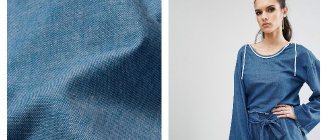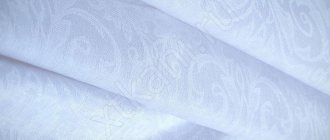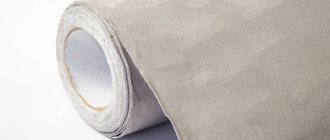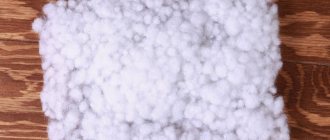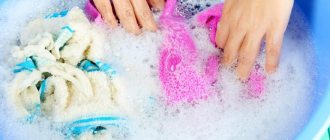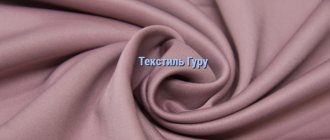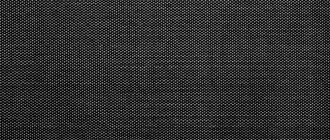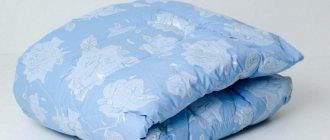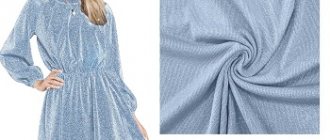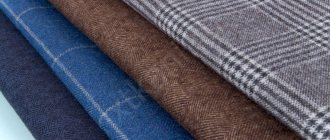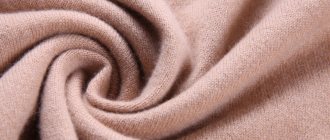Tarpaulin boots are made from tarpaulin - multi-layered durable cotton fabric, impregnated with a rubber solution and treated with a special water-repellent compound. The advantages of this material are that it withstands heat and frost equally well, and also protects the foot well from moisture.
Soldiers of the Russian Imperial Army. Reconstruction. Photo: www.russianlook.com
Origin story
Since ancient times, humanity has been looking for options for creating impregnations that provide moisture-proof properties and high abrasion resistance. Such examples were floor coverings that preceded the invention of linoleum, and the appearance of latex-impregnated clothing and shoes among Indians. To give strength to sails, the Vikings used the method of oiling the fibers.
The tsarist government of the Russian Empire was concerned about the high costs of supplying the army with genuine leather products. The power was faced with the task of finding a replacement for expensive resources by developing materials that demonstrate moisture resistance and strength.
The tarpaulin owes its appearance to the Russian military inventor Mikhail Mikhailovich Pomortsev. In 1903 he began a series of experiments with rubber substitutes. A year later, the scientist received a waterproof tarpaulin, which was used for sewing gun covers and fodder covers.
M. M. Pomortsev, continuing his experiments, created an emulsion with which tarpaulin could provide hygiene on a par with natural leather. It contains egg yolk, paraffin and rosin. Multilayer fabric impregnated with such a mixture had the ability to “breathe” and did not allow moisture to pass through.
During the First World War, the inventor donated the idea of creating a leather substitute, called tarpaulin, for the manufacture of army shoes to the Military Industrial Committee. The government authority accepted the idea and ordered the production of a large batch of boots and shoes.
The decision was opposed by industrialists and manufacturers who did not want to incur losses due to the low cost of the new material. And the “tarpaulin boot” was forgotten for a long time.
The rebirth of the material occurred thanks to Russian scientists in the pre-war years. In 1934, engineers Plotnikov and Khomutov designed the equipment, and the Soviet Union received the first batch of tarpaulin. Instead of Pomortsev's composition, synthetic rubber was used as impregnation, which significantly reduced wear resistance.
In August 1941, in conditions of a catastrophic shortage of military uniforms, Ivan Plotnikov, appointed chief engineer of Kozhimit, was tasked with improving the material, finding a composition that would soften the fabric and make it more elastic and durable.
For the successful completion of a strategic task in April 1942, the engineer was awarded the Stalin Prize along with the developers of new types of weapons. Shoes made of tarpaulin were light, did not get wet, and retained heat.
Photos and video materials from the Second World War indicate that a Russian soldier walked from Moscow to Berlin in tarpaulin boots. There is a monument in the military village of Zvezdny, Perm Territory. On its pedestal there are kirzachs weighing 40 kg, made of bronze, which became one of the symbols of Victory.
Interesting Facts
- On May 3, 2010, in the village of Novikovo, Staroyurevsky district, Tambov region, a memorial plaque appeared on the building of a local vocational school, on which Ivan Plotnikov is named as the inventor of tarpaulin, although he is associated with tarpaulin only by improving production methods in the production of shoe tarpaulin in collaboration with Alexander Khomutov. A likely reason for the confusion could have been the article by journalist Dmitry Gantsev, “In the Kirze in Europe,” published in 2005 in the newspaper “Arguments and Facts,” which contained erroneous information that did not correspond to historical facts.
- In the town of Zvezdny in the Perm Territory, a bronze monument in the form of a pair of tarpaulin boots was erected. The weight of the monument is about 40 kilograms.
Descriptions and properties
85% of all material is produced in Russia. Kirza is used for sewing shoes. In some models, the toe and heel are made of yuft leather. The use of a leather substitute made it possible to reduce the cost of production. What tarpaulin boots are made of can be answered unequivocally: from breathable waterproof fabric.
Kirza is an artificial material created from a base of plant origin with a special impregnation that ensures heat retention and water resistance. The fabric feels dense and rough to the touch. Double-faced canvases - with or without leather-like embossing on one side. Tarpaulin shoes and boots are difficult to distinguish from genuine leather products from photographs.
The inner layer absorbs moisture, so in shoes made of this material your feet do not freeze in any weather. A tarpaulin boot can protect against hypothermia in frosts down to minus 40 degrees.
Notes
- Kirza
- article from the Great Soviet Encyclopedia. - G.M.
Glaser. .
Chemistry and life
. Retrieved April 6, 2021. - TARPAPS, troop affiliation.
 equipment to protect objects and materials from bad weather. Made from canvas impregnated with ozokerite composition. For c. Vedas are sewing a trace. B.: 1) for covering bags of oats when packing on the go; 2) small - for covering backpacks on the limbers; 3) large - for backpacks on the back. charging progress box; 4) for paired carts mod. '76 and '84; 5) for a four-wheeler; 6) for a pharmacy gig arr. '84; 7) on the infirmary line; B.-suitcase for spare leathers and felts of a pair of carriages; 9) B.-suitcase for books and military medical forms. reporting. In addition, water pipes are made from the same waterproof fabric. buckets, duffel bags, boots. covers, backpacks arr. 94 and 98, bags for oats, collar guards, etc. Finally, covers are sewn from it for certain parts of guns: for sighting devices, lifting mechanisms, for the breech. parts of guns, etc. To cover carts, rectangular beads are used. forms sewn from panels. Edges B. d. b. folded and stitched; on the corners of B. d. b. inserted copper rings with holes (pistons), dia. ⅜ in., for threading the rope. Near the edges of the belt, rawhide straps are sewn to cover the backpacks. Big B. is made long. 15¾ arch., wide. 7¼ arch., small B. - long. 8 arsh. 12 tops, wide 7 arsh. 1 top Technical conditions for receiving carts and descriptions of riot vehicles were approved by c. owls 18 Feb. 1910 (Appendix on art. 1882 No. 60, 1887 No. 130, 1901 No. 47 and 54) - s: VE/VT/Tarpaulins.
equipment to protect objects and materials from bad weather. Made from canvas impregnated with ozokerite composition. For c. Vedas are sewing a trace. B.: 1) for covering bags of oats when packing on the go; 2) small - for covering backpacks on the limbers; 3) large - for backpacks on the back. charging progress box; 4) for paired carts mod. '76 and '84; 5) for a four-wheeler; 6) for a pharmacy gig arr. '84; 7) on the infirmary line; B.-suitcase for spare leathers and felts of a pair of carriages; 9) B.-suitcase for books and military medical forms. reporting. In addition, water pipes are made from the same waterproof fabric. buckets, duffel bags, boots. covers, backpacks arr. 94 and 98, bags for oats, collar guards, etc. Finally, covers are sewn from it for certain parts of guns: for sighting devices, lifting mechanisms, for the breech. parts of guns, etc. To cover carts, rectangular beads are used. forms sewn from panels. Edges B. d. b. folded and stitched; on the corners of B. d. b. inserted copper rings with holes (pistons), dia. ⅜ in., for threading the rope. Near the edges of the belt, rawhide straps are sewn to cover the backpacks. Big B. is made long. 15¾ arch., wide. 7¼ arch., small B. - long. 8 arsh. 12 tops, wide 7 arsh. 1 top Technical conditions for receiving carts and descriptions of riot vehicles were approved by c. owls 18 Feb. 1910 (Appendix on art. 1882 No. 60, 1887 No. 130, 1901 No. 47 and 54) - s: VE/VT/Tarpaulins. - . Arguments and Facts. Retrieved November 27, 2021.
How and from what they are made
The production of tarpaulin is classified as a technology using a high-molecular compound. The leatherette is based on multi-layer cotton fabric made from combed or carded yarn (medium and long fibers) with a density of 250 - 370 g/m2. m.
A rubber layer is applied to the canvas at a certain temperature. After cooling, the material is impregnated with a special composition.
Types of tarpaulin depend on the components used in fabric processing:
- acrinite is a mixture of rubber and latex (designated “A”). Polymethyl methacrylate is used as an impregnation;
- benzine-water impregnation and rubber dispersion (symbol “B”);
- latex impregnation, called spur-saddle.
The technological process takes place in several stages:
- Warp weaving;
- Impregnation with rubber compound.
- Heat treatment.
- Seal.
- Production of embossing on the front surface.
- Formation of rolls.
Characteristics
A description of the properties will help you understand the question: tarpaulin, what kind of material it is. The table will introduce the technical characteristics:
| Properties | Indicators |
| Purpose of the material | Shoe, technical fabric |
| Base composition | Natural plant origin |
| Method of weaving fibers | Plain (plain) weave |
| Density, g/sq. m. | 250 – 370 |
| Hygroscopicity,% | ≤ 1 |
| Water resistance | High |
| Main component of the synthetic layer | Rubber |
| Moisture absorption rate | Least |
| Air exchange | Short |
| Vapor permeability | Low |
| Electrification | Minor |
| Standard width of the web in a roll, cm. | 145 |
| Dyeing method | Plain dyed fabric |
| Parties | Double-faced with or without embossing, imitation leather on the front side |
| Main manufacturer | Russia |
| Standardization | GOST 2291 – 77 |
| Price | Available, from 250 rub. per meter |
Advantages and disadvantages
The main advantage of using tarpaulin in the production of military footwear is wear resistance and minimal cost. Therefore, the main purpose of the material is the manufacture of tarpaulin boots and boots.
In addition to these qualities, it is worth noting the properties that are advantages:
- maximum water resistance;
- abrasion and tear resistance;
- resistance to mechanical damage;
- the ability to accumulate static electricity is minimal.
When choosing products made from tarpaulin, it is worth considering the disadvantages:
- does not tolerate maximum low and high temperatures (the surface may crack);
- shrinks when exposed to heat;
- increased rigidity;
- meager color palette (black and dark gray, less often bleached and dyed samples).
Advantages
Kirza is a popular material with a number of undeniable advantages:
- very easy to wear, does not create additional stress on the legs or arms;
- durable and resistant to punctures, cracks, tears and other mechanical damage;
- bends well and quickly takes a shape convenient for everyday wear;
- the material is breathable, moisture-resistant, frost-resistant (warms in cold weather down to -40°C);
- the cost of the paintings is low, affordable for most consumers.
Application of material
In the Soviet Union, in the post-war years, tarpaulin was used in the production of army uniforms:
- as a material for the tops of soldiers' boots;
- Sewing motorcycle leggings;
- Production of officer tablets;
- Damaged gun cases;
- Holsters for pistols;
- Bandoliers.
Modern industry uses tarpaulin to make the following things:
- Army combat boots and boots;
- Work and sports shoes;
- Gun cases;
- Inserts in work clothes, robes;
- Ammo pouches;
- Briefcases, backpacks, bags;
- Punching bags and gloves;
- Packaging materials;
- Drive belts.
Analogs
Two types of fabric from which shoes are made are considered analogues of tarpaulin:
- Yuft is a natural material of animal origin. Demonstrates optimal hygiene. Unlike tarpaulin, it is expensive and is supplied to shoe production in limited quantities.
- Leather substitutes are affordable materials. Compared to tarpaulin fabric, they are inferior in terms of wear resistance. They do not allow air to pass through, which makes the materials unhygienic and unable to retain heat in cold weather.
Foot wraps
We can admit that foot wraps are no less a brilliant invention than tarpaulin boots themselves. However, they are inseparable. Those who have tried to wear tarpaulin boots with socks know that sooner or later the socks will inevitably roll down onto the heel. Then, especially if you are on a forced march and cannot stop, good luck. My feet are bleeding.
In addition, foot wraps are also convenient because if they get wet, you just need to wrap them on the other side, then the leg will still remain dry, and the wet part of the foot wrap will dry out in the meantime. The spacious boot of the “kirzach” allows you to wrap two foot wraps in cold weather, plus put newspapers in them in order to keep warm.
Care instructions
Caring for products made from the material is easy. It is important to follow the rules to extend the service life. You can clean things made of tarpaulin with a damp cloth or a medium-hard brush dipped in a soap solution. It is acceptable to use creams and protection products for shoes.
Drying is carried out at 30 - 40 ° C in rooms with good air circulation. It is not recommended to store products in places exposed to direct sunlight. Sudden temperature changes should be avoided.
Dry cleaning for tarpaulin shoes and accessories is impractical.
